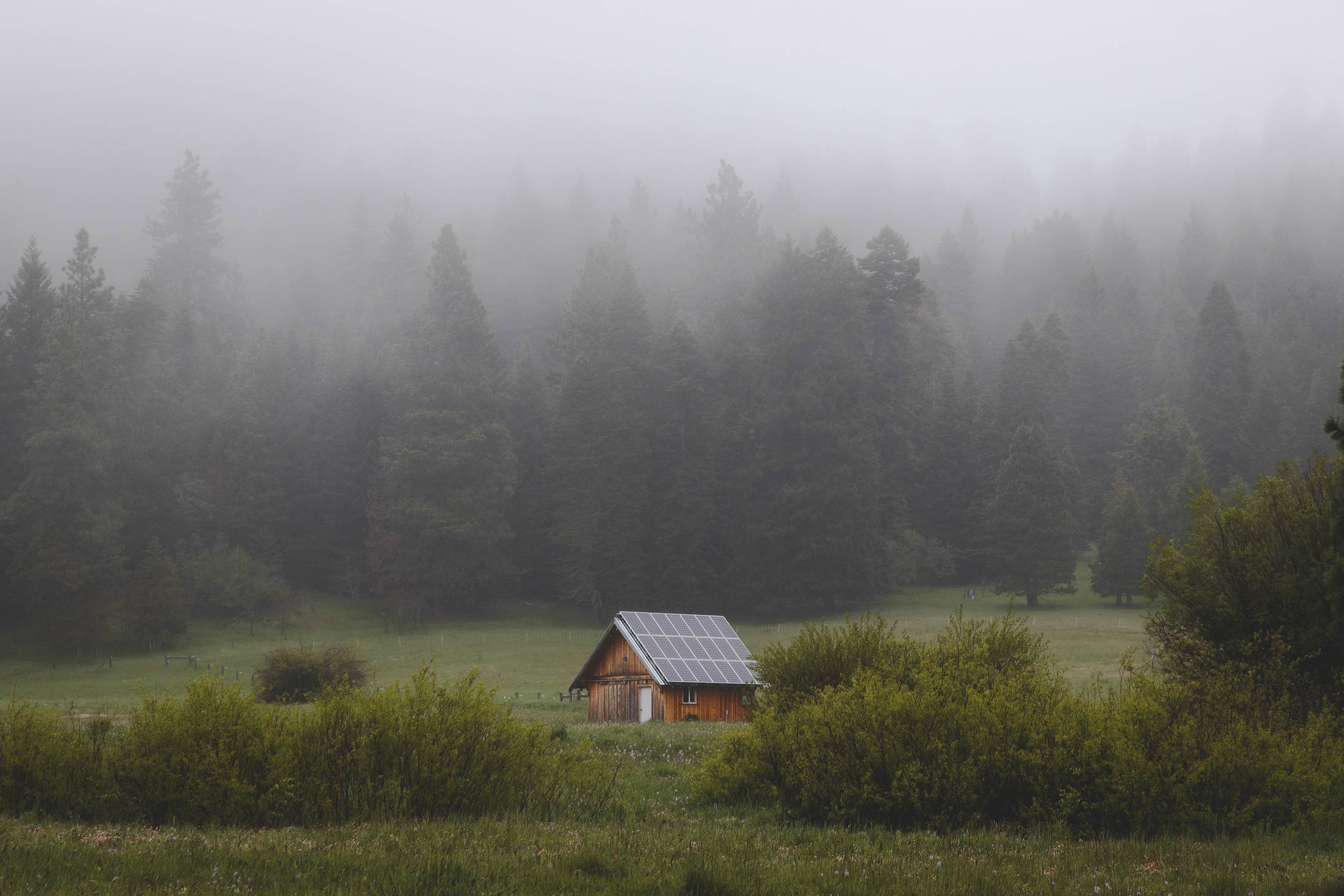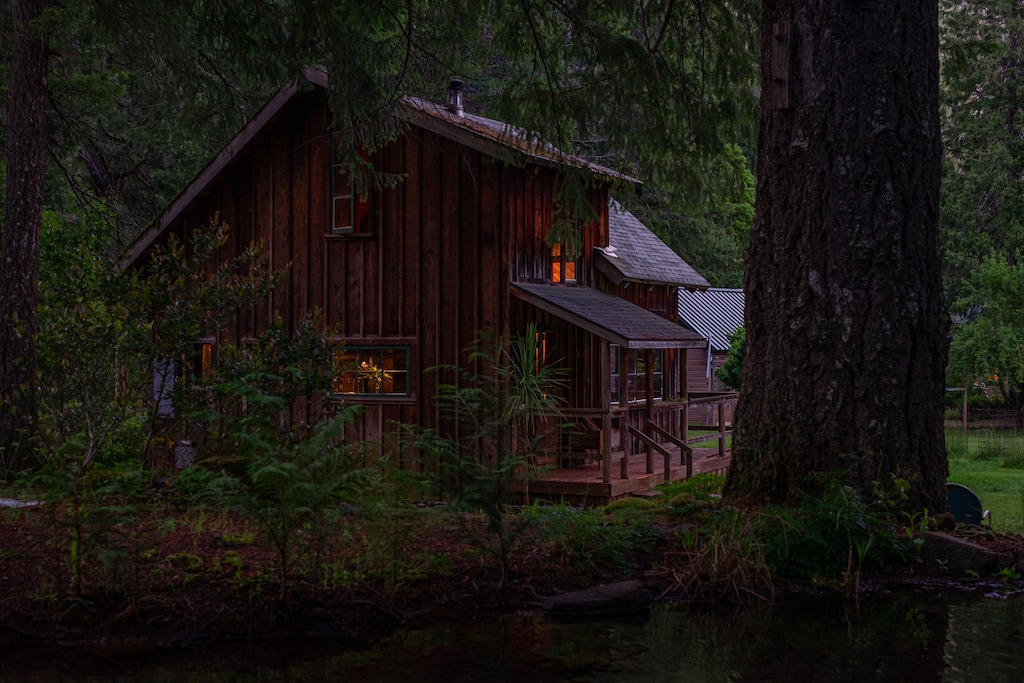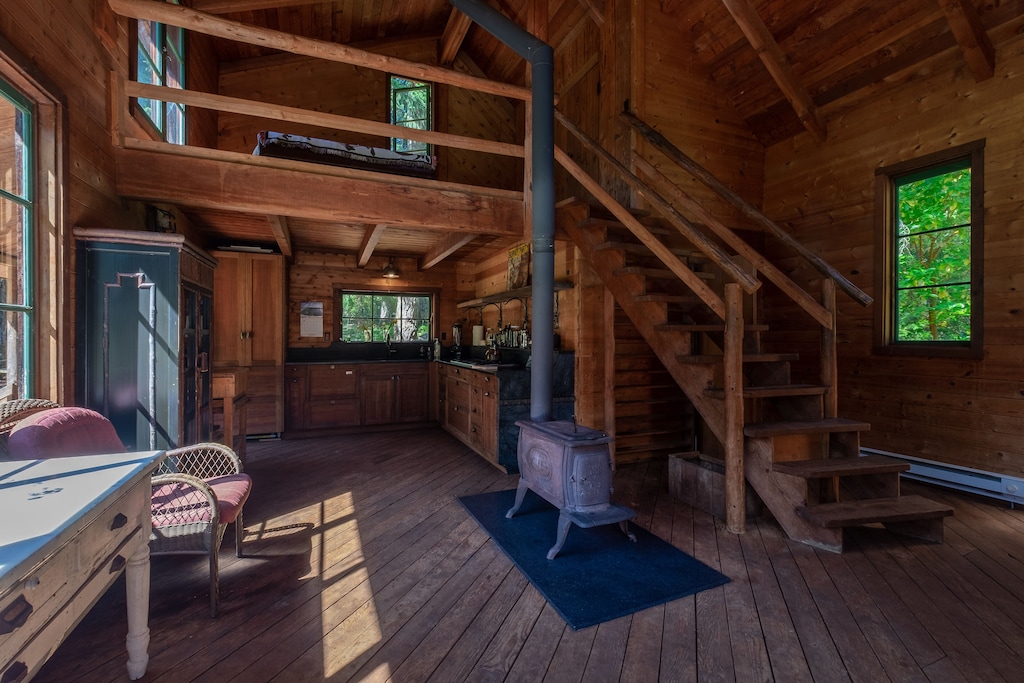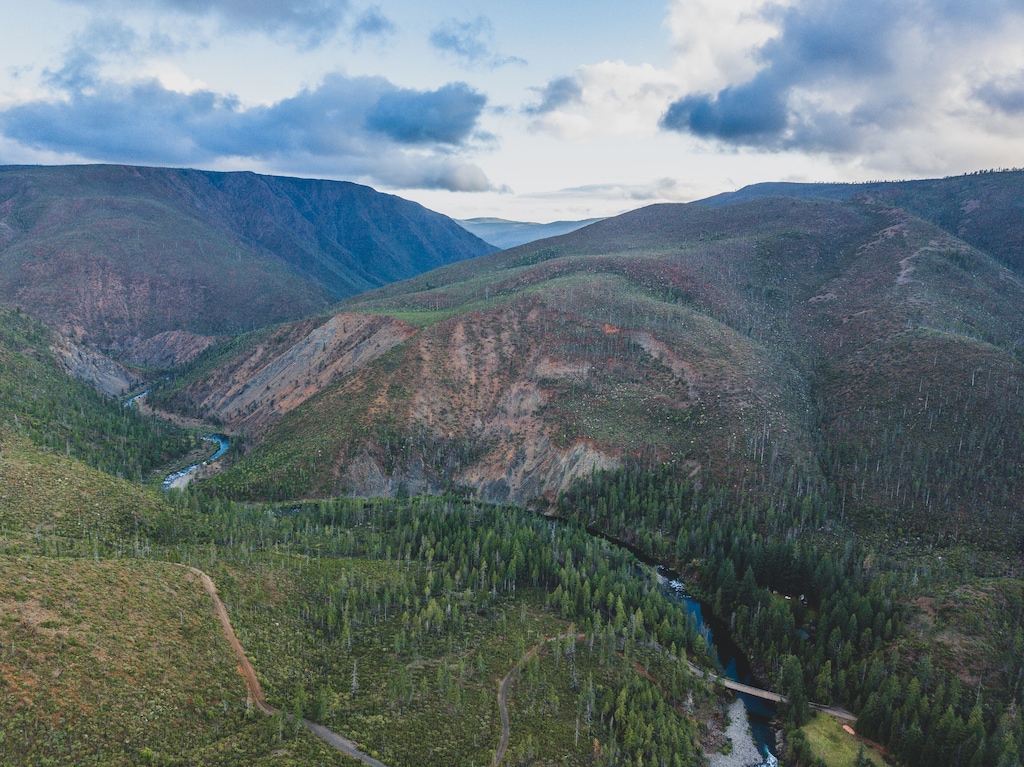 Sustainable building practices are important because they help reduce our environmental footprint. Using less energy and resources than traditional buildings not only reduces our impact on the environment but reduces the impact on our wallets as well. Since the pandemic, more and more people are moving from major cities to more remote locations, and some have been building their own eco-cabins.
Sustainable building practices are important because they help reduce our environmental footprint. Using less energy and resources than traditional buildings not only reduces our impact on the environment but reduces the impact on our wallets as well. Since the pandemic, more and more people are moving from major cities to more remote locations, and some have been building their own eco-cabins.
What Is An Eco-Cabin?
Eco-cabins are environmentally friendly dwellings that are sustainable and livable. They are designed and constructed using natural materials with technologies that use renewable energy sources, improve energy efficiency, conserve water, and reduce waste. Eco-cabins are often designed with green living spaces and built to blend into their natural surroundings. This article will explore the benefits of eco-cabins, how you can build your own, and eco-cabins you visit today.
How Are Eco-Cabins Built?
Eco-cabins are generally integrated into their surrounding environment. Eco-cabins reuse existing resources available on the site to reduce the environmental impacts of construction. It makes use of local materials to avoid transportation costs and reduce the ecological footprint.
Log cabin style eco-homes can be built using the natural timber on the property. If skilled enough, builders could mill their own lumber on-site to use for the construction. Trees could even be replanted in place of the felled trees to replenish the materials utilized for construction.
After construction, the natural surrounding area of an eco-cabin would generally remain untouched. An eco-cabin should aim to showcase the natural environment and preserve the native flora and fauna around the cabin.
Eco-cabins also reduce impervious surfaces like driveways, walkways, and roofs to allow the natural flow of rainwater, reduce flooding, and control water runoff. Permeable pavers and gravel can be used in place of concrete driveways to reduce their impact on the environment.
Green roofs or eco-roofs can even be used to convert traditional, impervious surfaces into vegetative roofs that retain water and release them more slowly to reduce stormwater impacts. Green roofs also improve the insulating properties of the roof (they increase the cabin’s R-value) by creating another barrier between the environment that will keep your home cooler in the summer and warmer in the winter.
Vegetative roofs can even extend the life of your roof by exposing it to less UV radiation and extreme temperature swings. These will be more expensive to install, but cheaper in the long haul.
Owners using rainwater catchment systems (discussed later in this article) wouldn’t use green roofs, but they could utilize their roofs to collect water in cisterns and convert it into to potable water. This would be another way to reduce/eliminate stormwater runoff.
How Big Are Eco-Cabins?
There is no maximum square footage to building an eco-cabin; however, they tend to be smaller than traditional homes. One of the reasons they tend to be smaller is simply because smaller structures use fewer resources. With the goal of reducing material usage, a smaller structure is a natural consideration.
Additionally, smaller structures require less energy to heat, cool, and power. Many eco-cabins function “off the grid.” When living off the grid, one of the realities of this lifestyle is that your energy usage can not exceed the energy you capture. If you live in a city and use more electricity or water one month, you simply pay a higher bill. However, if you’re living a completely self-sufficient lifestyle, then it is possible to run out of power.
Keep in mind, though, not all eco-cabins are fully off the grid. Many eco-cabins, for example, will feature solar panels and a battery bank to store solar power but may convert to grid power when their solar energy is depleted. Others may not utilize renewable energy sources at all, but they simply have a structure that minimizes its use of those resources.
How Eco-Cabins Reduce Their Carbon Footprint
In addition to reducing its energy dependence, eco-cabins also reduce their energy usage in every system within the house. Eco-cabins should be energy efficient and may make use of geothermal heating and cooling systems, rainwater catchment tanks, composting toilets, and more to lessen environmental impacts.
Energy Efficiency
First and foremost, energy-efficient homes are well insulated. The easiest way to decrease energy usage is to decrease heat loss. Heat loss is the transfer of heat from inside your home to outside your home.
Insulation is measured in R-value, or its ability to resist heat flow. In other words, the higher the R-value, the better your home will be insulated. Eco-cabins focus on achieving a high R-value.
Of course, eco-cabins shouldn’t just say warm in the winter but should stay cool in the summer. A well-insulated home will help in the summer just as much as in the winter, and making use of cross-ventilated windows to help in exhausting hot air should be another consideration of an eco-cabin.
Additional windows also provide natural light, reducing the need for artificial light (energy draw) during the day. However, windows are often potential areas of heat loss, and building with LEED-certified windows and doors helps to improve the energy efficiency of the cabin.
Geothermal Heating and Cooling
There are various forms of energy-efficient heating and cooling systems. There is not one system required to make your cabin an eco-cabin; however, one great option is a geothermal system.
Geothermal energy is simply heat within the earth. Below the earth’s surface, the temperature stays consistent, and this temperature can be used to regulate the temperature within your own eco-cabin! A geothermal system buries a coiled pipe underground and makes use of a heat pump to transfer heat between your house and the earth.
While it’s more expensive to install a geothermal system up-front, it makes your long-term energy usage much cheaper and provides a sustainable form of heating and cooling in the future.
Rainwater Collection
A rainwater catchment system captures the rain from precipitation, filters it to eliminate any agricultural or industrial contaminants, and stores it for use as potable water.
Rainwater catchment systems work by converting rooftops into reservoirs. A typical residential system consists of a gutter system that runs down the roof and a storage tank with a slanted bottom that relies on gravity to feed the water into a filter before being stored in an underground or above-ground cistern.
This could eliminate the need for a well, or can be used in place of a well when a well can’t achieve the necessary gallons per minute to supply a house. This would be used when access to municipal water is not available.
Sewage
Composting toilets are another great option because they don’t require access to a sewer system if your cabin is off-grid, and they are significantly less expensive than installing a septic system. They’re also eco-friendly because they don’t require chemicals to process the waste. These toilets separate the liquids from the solids, and the solids become compost which can even be used as a fertilizer for plants. I have the Nature’s Head Composting Toilet in my off-grid RV, and I love it. I’m using it in a much smaller space than a home, and it doesn’t smell.
Real Life Eco-Cabin You Can Visit Today
If after all of this, you’re looking for an example of an eco-cabin in real life, here’s my top pick. It’s available for rent on VRBO, so you can visit and experience it for yourself.
Off Grid Cabin on North Fork of Smith River

Reasons To Love It:
 This beauty was salvaged after taking damage from the Biscuit Fire of 2002, a massive wildfire that decimated 500,000 acres of Southern Oregon and Northern California. The property is located in what was once the town of Rockland – the river crossing in the 1850s for wagons to get gold from Oregon to the port in Crescent City.
This beauty was salvaged after taking damage from the Biscuit Fire of 2002, a massive wildfire that decimated 500,000 acres of Southern Oregon and Northern California. The property is located in what was once the town of Rockland – the river crossing in the 1850s for wagons to get gold from Oregon to the port in Crescent City.
The cabin sits on 9 river-front acres and is an absolute hidden gem. It’s a 20-mile dirt road drive into the property and a true off-grid getaway to disconnect from the city and reconnect with nature. The property does not have cell service but has WiFi if you’re looking to go somewhere quiet to work.
The cabin is powered by a hydroelectric generator and had to be rebuilt after the system was damaged during the fires. The owners spent two summers rebuilding the hydroelectric system as well as replacing the copper pipe which was stripped by local theives as it sat vacant after the fire. During the renovation, the owners also replaced the kitchen and bathrooms yet managed to retain the original character of the cabin while building in modern amenities.
 The house now also features battery backups for the power system and allows them to run a refrigerator, freezer, and dishwasher in the cabin. All of the countertops are soapstone, and the shower is made from granite slabs. It’s now a fully restored and functioning rustic gem. And best yet… They’re renovating the main cabin on the property that will be listed on VRBO as well.
The house now also features battery backups for the power system and allows them to run a refrigerator, freezer, and dishwasher in the cabin. All of the countertops are soapstone, and the shower is made from granite slabs. It’s now a fully restored and functioning rustic gem. And best yet… They’re renovating the main cabin on the property that will be listed on VRBO as well.
You can visit their listing here to support those who are doing sustainable work in the world. 5 out of 5, highly recommend.